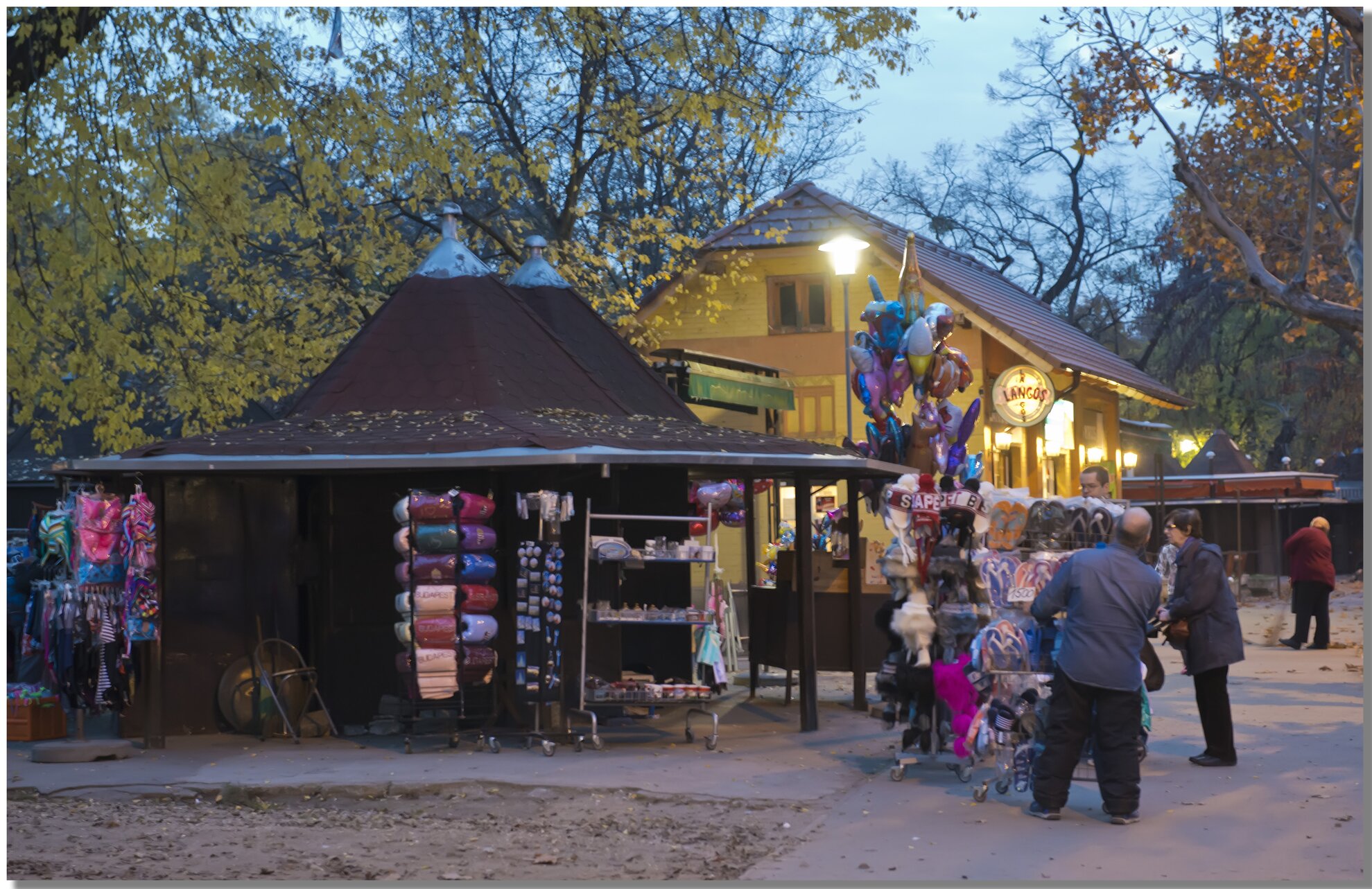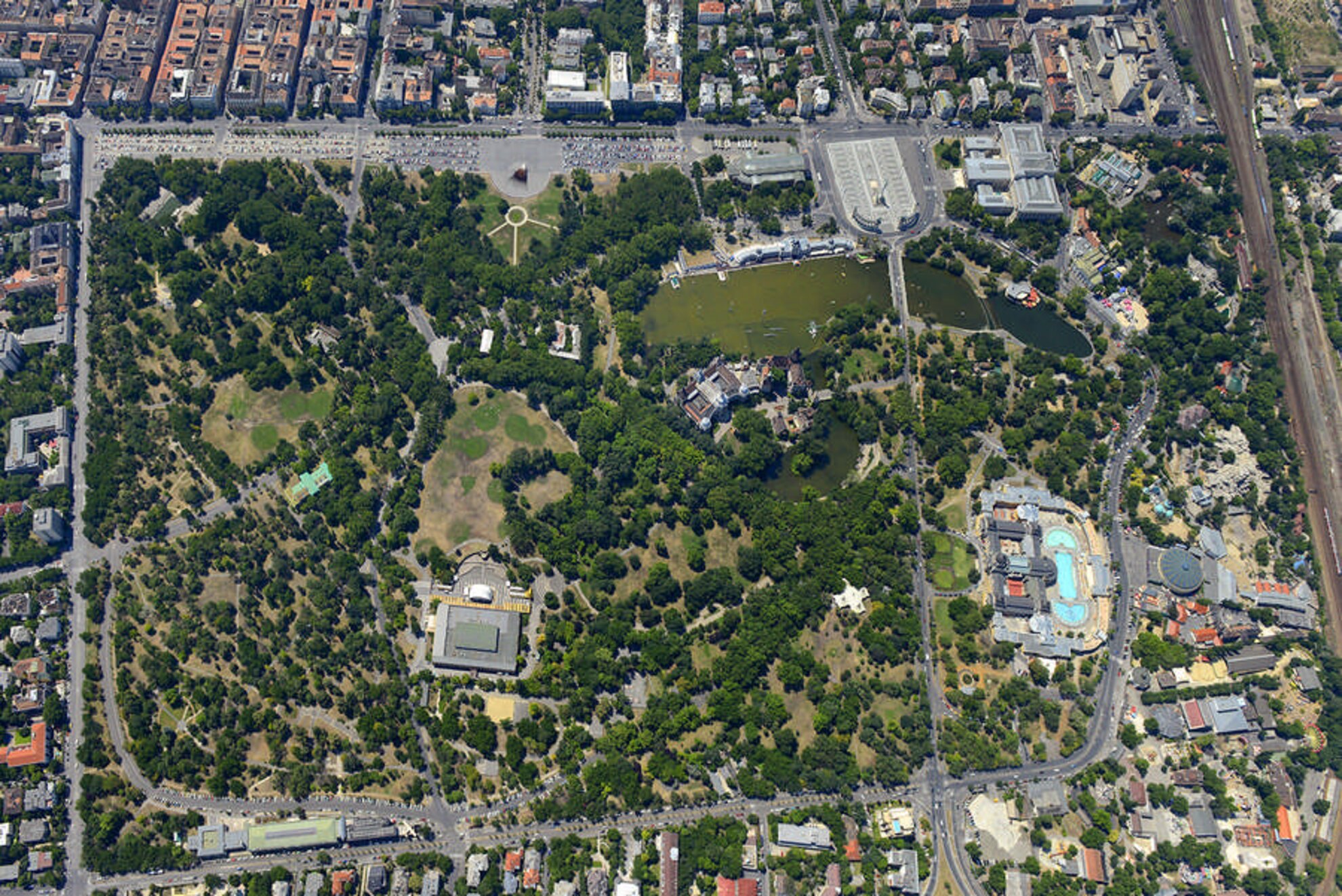Dual functionsIt was the then mayor, János Boráros, who made a proposal for the creation of what's now known as Városliget ("City Park") in 1794. A few years later the transformation of what was a bog into a lake and islands began. A tender for the establishment of the world's first public park was announced in 1813, and so the tree-filled area, which was well beyond the city limits at the time was transformed according to the plans of the German landscaping architect Henrik Nebbien.
It was designed with an English landscape garden in mind.

In the following decades a zoo, ice rink and amusement park were opened. Later, the park also gave space to various fairs, hence the Iparcsarnok ("Industrial Hall") that was later destroyed in World War 2, and what's now the Olof Palme House were built in 1885.
The Vajdahunyad Castle was built - originally of wood - for the 1896 Millennial Exhibition and later, it was rebuilt made of stone. The Museum of Transport and the Kunsthalle were also built in 1896, while the Museum of Fine Arts was built a decade later.

From the start City Park has fulfilled a dual function, being both a pubic park with walking paths and green areas, and a cultural quarter with entertainment and educational functions.Recent historyThe first blow was the destruction caused by World War 1 and 2, then came the establishment of the Felvonulási Square in the 1950s. For this about a tenth of the green area was replaced by cobblestones, where the flagships of Soviet military engineering and Generals in military hats marched. Some facilities were closed, while the amusement park called Angolpark ("English Park") became known as Vidámpark.

In the Kádár Era (1956-1989), the park was managed by the Budapesti Nemzetközi Vásár, who established a small bazaar in the area. Massive public events there resulted in a decrease in the available green surface.
Current plansMost residents of Budapest agree that a renovation and development of City Park is a must. As a public park it is run down.
There are dozens of neglected buildings, and the park is divided by wide strips of asphalt. It is by neither pleasing to the eye, nor orderly.

The goal of the Liget Budapest project managed by the director of the Museum of Fine Arts, László Baán, is to create a modern, 21st century cultural quarter. Of course there are a number of development options for the area, that is underused by international comparison. It is also clear that the idea of the culture quarter is not unprecedented: there are several similar districts around the world, like the MuseumsQuartier in Vienna, or the Museuminsel and the Kulturforum in Berlin.

The first plan, which imagined five museum buildings at the axis of Felvonulási Square and Dózsa György Road triggered revulsion in many - and not by accident. The museum buildings would have appeared isolated in the texture of the city, separating the City Park from downtown Budapest. The minds behind that initiative, luckily, were responsive to criticism and transformed their ideas.

The new visualizations suggest a looser, pavilion-like placement, but opponents still think that too many green surfaces would be sacrificed for the plan. There were some real big guns invited to take part in the international design tender. Renzo Piano, Jean Nouvel and David Chipperfield are celebrated architects, whose work is followed closely all around the world. Whatever they design would likely to become an emblematic building, starring in travel guides and on magazine covers.

There are also plans to relocate regional museums to Budapest, like that of Hungarian photography in Kecskemét, hence the photographs of the world-famous André Kertész, Brassaï and the Capa brothers would be moved to the Hungarian capital, boosting Budapest's position in the region. By establishing a Museum of Architecture a huge gap would also be filled.

We'd like to spare you the floor area ratios, building heights and other professional details; what's important is that opponents think it is unnecessary to place 5 new museums and other cultural institutions in the area. The office coordinating the redevelopment project indicates that green areas and floor areas will - surprisingly - both increase, as several dispensable buildings and concrete surfaces would be removed. Nonetheless concern for the size of what green area would remain is not completely without basis.

Development is necessary, but the arguments of opponents must be taken into consideration. It is always profitable to invest in culture, and the City Park is (from many aspects) suitable for hosting a cultural quarter of such magnitude, however, it's worth considering whether all five museums must be concentrated there.
Some believe it would be good to develop City Park, but also place some of the planned institutions along Andrássy Avenue or in the still to be reconstructed part of the Buda Castle. This would mean the City Park's green area could grow, while cultural plans could also advance. One thing is certain: the entire city would benefit from some kind of development of City Park, but details must still be clarified.




